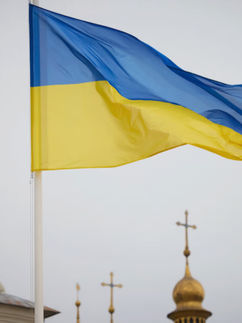The Point of No Return? Ethiopia’s Conflict in the Tigray Region
- Jennifer Chance
- Dec 11, 2020
- 4 min read
Updated: Jan 27, 2022

Jennifer Chance
Ethiopian forces clashed with the Tigray People’s Liberation Front (TPLF) in early November this year, escalating tensions between the federal government and ruling leaders of the Tigray region. This came after a series of aggravations, including the TPLF holding an election deemed illegal by the federal government and launching an attack on the national military base in Tigray, as well as ongoing, deep-rooted frictions between the many ethnic groups that make up Ethiopia.
The current state of conflict has sparked concerns about the possibility of civil war, regional instability, and widespread war crimes. Amnesty International’s investigations found that hundreds of civilians have been killed in Mai-Kadra in Western Tigray, while around 33,000 people have fled the region into neighbouring countries to avoid the increasingly hostile conflict.
Communications have been severed from the region, and there is difficulty with confirming reported information and with providing humanitarian aid. Due to this culmination of events, the United Nations has called the Ethiopian conflict a ‘full-scale humanitarian crisis’.
Ethiopia’s Political History
Before Abiy Ahmed took office in 2018, the Ethiopian People’s Revolutionary Democratic Front (EPRDF) held the position for 27 years. The Tigrayans are a minority ethnic group in Ethiopia, a country that consisted of around 80 different ethno-national groups. The Oromos, a major ethnic group accounting for 34.4% of the Ethiopian population, increasingly felt that they did not have a voice in the country’s political system as the EPRDF was mainly dominated by the TPLF.
In April 2018, Abiy ascended as Prime Minister of Ethiopia, coming into power after an Oromo-led uprising toppled the EPRDF and installed a new Prosperity Party. Abiy promised a wave of reforms to make the country more economically and politically equal, gaining popularity when he opened up Ethiopia’s reclusive economy to the world. In 2019, he won the Nobel Peace Prize for fostering stronger relations with neighbouring Eritrea.
Beneath the surface, though, ethnic tensions continued to fester. The TPLF refused to participate in the new political system, claiming that they were being persecuted and blamed for corruption. Ethnic violence in Oromia and Amhara also caused regional displacement in 2019.
2020 Conflict
On August 21, Abiy postponed the country’s elections, citing concerns over the COVID-19 pandemic. The TPLF directly opposed this ruling and went ahead with their own regional election in Tigray. In response, Abiy accused the regional government of acting unlawfully and the Ethiopian parliament voted to dissolve the Tigray leadership.
On November 4, the TPLF attacked a national military base in Tigray, with Abiy stating that they were looting the premises. Following this, the federal government sent troops to the region and cut off electricity, internet, and telephone services. The ensuing clash between the two militaries caused the Mai-Kadra massacre and the exodus of refugees from Tigray. The government has also frozen economic funding into the region in an attempt to squeeze out the rebellion.
Refugees have mentioned the prevalence of bombings, street shootings, and machete killings occurring in the region. Food supplies are plunging, and the United Nations commented that 1 million people were already in need of aid even before the conflict.
The Prospect of Civil War
The United Nations has expressed concerns that the Ethiopian conflict may break out into civil war. Recently, Abiy sent out an ultimatum to Tigray forces, saying that they had 72 hours to surrender before the military forces would come and attack as a ‘final push’. The government has also warned civilians in the Tigray capital that there would be ‘no mercy’ if they didn’t ‘save themselves’.
The prospects of civil war grow even more worrisome considering Ethiopia’s unstable past. A cycle of repressive regimes, outright violence and severe famines has prevented the country from reaching much-coveted peace. Indeed, the last 60 years have been a constant struggle for stability in the ethnically diverse country.
With Abiy declaring that the conflict in the Tigray region was at ‘the point of no return’, the prospect of more civilians being caught in the crossfires is extremely likely, especially because the TPLF does not seem to be surrendering. Instead, they have issued a statement saying that they would ‘dig trenches and stand firm’.
A civil war would also be devastating for the Horn of Africa. Already, Eritrea has been increasingly implicated in the conflict, with the TPLF accusing them of teaming up with the Ethiopian government, and the TPLF firing missiles into the Eritrea region. The outflow of refugees from Ethiopia would create a refugee crisis in other countries and foster destabilisation.
Even with pressure from the international community, and other regional leaders such as South African president Ramaphosa who has denounced the conflict and urged for peace, the possibility of a full-scale civil war remains high. The TPLF has a quarter of a million people in its military, and can therefore defend itself against government forces for an extended period of time. Unless the two parties reach a peace deal, there will likely be increased casualties and long-term ramifications to the entire African continent.
Jennifer Chance is a freelance writer studying Economics and Politics & International Studies at the University of Melbourne. She has a passion for journalism within the context of human rights and international affairs.

















Comments